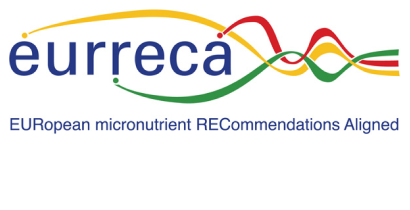Food-based dietary guidelines: Are we on the right track? (EURRECA)
Last Updated : 30 June 2011Establishing Food-Based Dietary Guidelines is one thing. Making sure people read, understand and follow them is another. Researchers within the EURRECA Network of Excellence have looked at how consumers perceive Food-Based Dietary Guidelines.
What are Food-Based Dietary Guidelines?
Food-Based Dietary Guidelines (FBDG) are simple messages on healthy eating, aimed at the general public. They give an indication of what a person should be eating in terms of foods rather than nutrients, and provide a basic framework to use when planning meals or daily menus. They go beyond the fairly technical nutritional information to give nutritional education in a way that is understandable to the individual consumer.
More specifically, FBDG take into account that more than just one dietary habit will make people healthy; it is a holistic approach. Based on this principle, FBDG aim to improve the way people eat, which in turn will improve prevailing diet-related public health problems as a whole. They recognise that a healthy diet is more than just nutrient requirements and recommended intake levels. For example, food processing and preparation may influence the nutritional value of foods. In addition, sometimes we know that some foods are good for us but science has not yet established the exact biological reason. Other elements taken into account in FBDG are the enjoyment of meals, the social and cultural aspects of eating as well as the importance of having a varied diet.
Following the 1992 International Nutrition Conference, the World Health Organization (WHO) and the Food and Agriculture Organization of the United Nations (FAO), embarked on several activities aimed at developing dietary guidelines for the public. In 2005, WHO reported that 33 European countries (75 in the world) had developed FBDG.1
In the 6th Framework Programme-funded EURRECA Network of Excellence, researchers have reviewed available literature on just how well these guidelines work. Do consumers read, understand and follow them?
Consumer awareness, understanding and use
Covering twenty-eight studies from across the world, the review reveals that consumers to a certain extent are aware of FBDG.2 It has been suggested that awareness is a necessary first step to behavioural change.3 However, the relationship is complicated and many other factors such as preference determine whether awareness finally translates into improved dietary habits.
The studies on whether consumers understand the guidelines show mixed results. There tends to be a general understanding of key concrete concepts like low-fat and low-sugar but it seems that consumers face greater difficulties understanding more abstract concepts such as portion sizes.
When it comes to consumers actually using FBDG, the jury is still out. There are simply too few studies available to tell whether being aware of and understanding these types of guidelines help them eat more healthily.
The review shows that the promotion of FBDG has not always been accompanied by evaluation measures and that there is a need to refine the evaluation methods used. The first step towards proper evaluation is to set clear definitions of what are meant to be the measures, for example the awareness and use of FBDG. Then the methods need to be consciously selected to ensure these serve the purpose and actually evaluate the relevant factors. Once FBDG are evaluated based on clear definitions using well-considered methods, studies can be compared and conclusions drawn on the effectiveness of FBDG as a tool to promote healthy eating.
Conclusion
Effective public information tools are crucial in achieving public health goals. To find out if the efforts have indeed been worthwhile, effective evaluation measures need to be put in place. The EURRECA review on consumer awareness, understanding and use of FBDG shows that the promotions of these guidelines have not always been accompanied by evaluation measures. Thus, it is too early to tell whether the FBDG approach has been an appropriate way to promote healthy eating. Proper evaluation of the effectiveness of FBDG will allow us to tell which types of FBDG are most efficient and what the contribution of FBDG is to public health improvements relative to other coexisting public health initiatives.
EURRECA - EURopean micronutrient RECommendations Aligned Network of Excellence is funded by the European Commission (2007-2011), contract number FP6 036196-2 (FOOD) and co-ordinated by ILSI Europe.
References
- Summary Report EFSA Scientific Colloquium 5, 21-22 March 2006, Parma, Italy.
- Brown KA et al. A review of consumer awareness, understanding and use of food based dietary guidelines. Br J Nutr. Published online 9 March 2011. doi:10.1017/S0007114511000250.
- Contento IR et al. (1995). The effectiveness of nutrition education and implications for nutrition education policy, programs and research: a review of research. J Nutr Educ 27(6):279-418.
